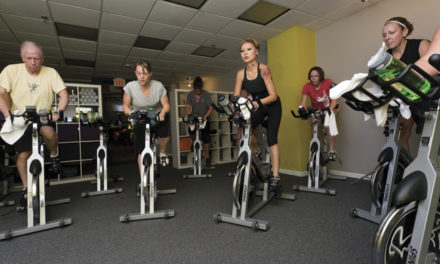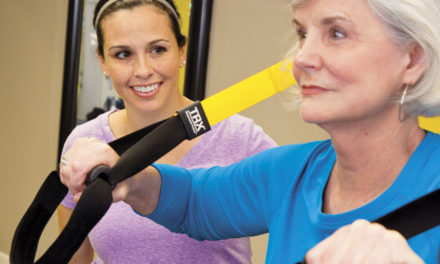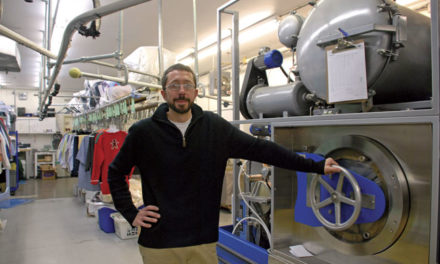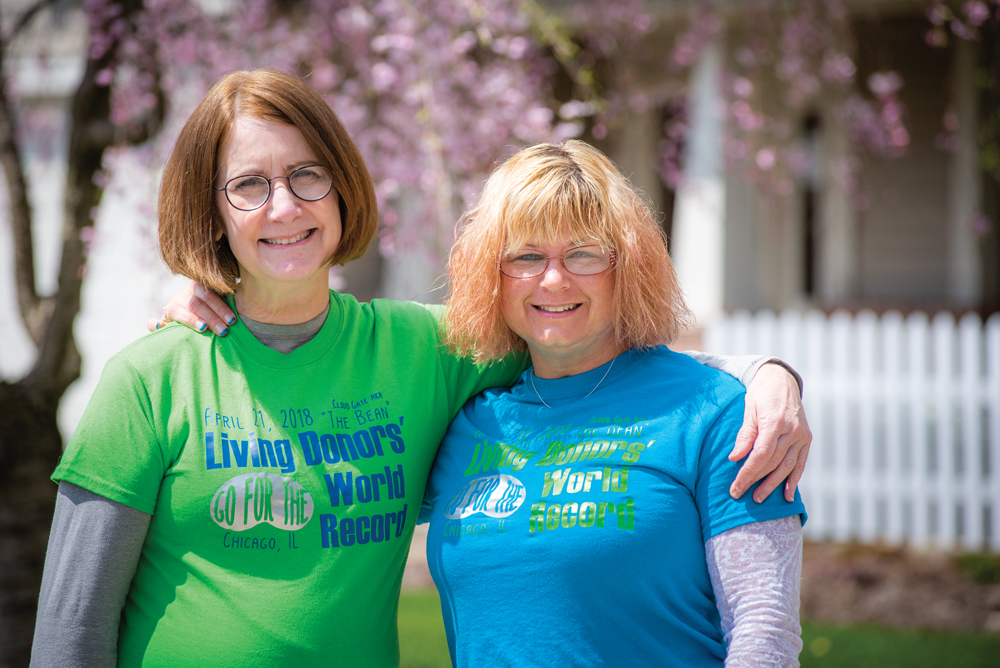
(l-r) Anita Rausch and Kate Griggs. Photo by Rodney Margison
BY CARMEN SIERING
Though they are fast friends now, Kate Griggs and Anita Rausch might never have become acquainted if it were not for kidney transplants. Both Bloomington women donated kidneys to strangers.
“People want to call us heroes,” Rausch says. “But we don’t feel like heroes. We just got a tap on our shoulder and followed through.”
Rausch, who works as a CPA at Root Advisors, felt that tap after her mother’s death in May 2014. While going through her belongings, Rausch found a note in which her mother regretted not having made a difference in the world. Rausch’s father died of heart failure at 59. That, combined with her mother’s note, prompted her to research living organ donation.
“I realized I could change someone’s life by doing this,” she says. “My mom was an early widow and never remarried. I wanted to do something that could make a difference in the world to honor her. This way, there might be someone who has a loved one around longer.”
She started doing research and ended up calling Johns Hopkins Hospital in Baltimore, Maryland. “I did a year of testing, and it is extensive,” Rausch, 60, says. “They want to make sure there are no repercussions for the donor.”
By August 2016 she had a match. Her donation was made on October 17, 2016.
Kate Griggs’ donation story started in March 2016. Scrolling through Facebook, she saw a post about a man who needed a kidney. “I messaged his mom and told her I would fill out the paperwork [for donation] the next day,” Griggs, 45, recounts. “I didn’t know him. Two months later, I went for testing.”
Her donation was made in September 2016, but not to the man who inspired her to get tested. He had found a kidney before Griggs’ testing was complete.
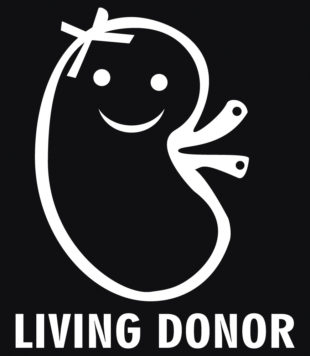 According to the National Kidney Registry, there are more than 50,000 living donors. Most are between 18–65 and all have been deemed healthy enough to donate. In a system called “chain donation,” transplant centers can connect several non-matching pairs of donors and patients, shuffling organs around so recipients end up with the best possible match. But chains can’t start without someone offering a kidney to a stranger. Rausch’s donation created a chain of seven transplants; chains may be as long as 30.
According to the National Kidney Registry, there are more than 50,000 living donors. Most are between 18–65 and all have been deemed healthy enough to donate. In a system called “chain donation,” transplant centers can connect several non-matching pairs of donors and patients, shuffling organs around so recipients end up with the best possible match. But chains can’t start without someone offering a kidney to a stranger. Rausch’s donation created a chain of seven transplants; chains may be as long as 30.
Still, some people don’t understand why anyone would become a living donor.
Griggs, who works in forensics and owns a company that provides autopsy services to coroners and funeral home directors, says she was dismayed at the reaction her decision to donate generated. “I lost some friends and so many clients after I made my announcement,” she says. “The number one reaction was, ‘Why would you do that?’”
Griggs wanted other donors to have a happier experience. In February 2017, she created “Kate Cares” kidney-donor care packages (lip balm, lotion, T-shirt, socks, etc.) which she sends to donors she’s met on social media. She also created a decal: a simple line drawing of a kidney with a smiling face and the words “living donor.” She’s sent more than 1,230 decals to donors in every state and 18 countries—all free of charge.
It was the decal that brought Griggs and Rausch together. Most decals are mailed, but when Griggs saw Rausch’s Bloomington address, she delivered it personally.
“I just walked into her office one day and said, ‘I’m Kate!’” she says, laughing. “And she got all teary eyed and we shared our stories.”
While many living donors are connected on social media, they don’t frequently meet face-to-face. On April 21, Griggs and another living donor, Laurie Lee of Chicago, arranged for donors to gather in Chicago’s Millennium Park at the Cloud Gate sculpture—better known as The Bean. Shaped like a kidney, it was an appropriate location for a group trying to raise awareness about living donations and to set a Guinness World Record for the most living donors gathered in one place.
As it turned out, 438 living donors from 39 states and two foreign countries (Canada and India) attended the rally. More than 1,200 supporters, family members, and transplant recipients were also on hand. Griggs says the group now plans to meet at The Bean every April, which is designated Donate Life Month.
“The living donor rally was a finale to my donation journey,” Griggs says. “I’m kind of shy, believe it or not. I’m used to being alone. I mean, I work with dead people. At the rally? I seriously hugged 500 people!”
For more information, visit kidneyregistry.org.
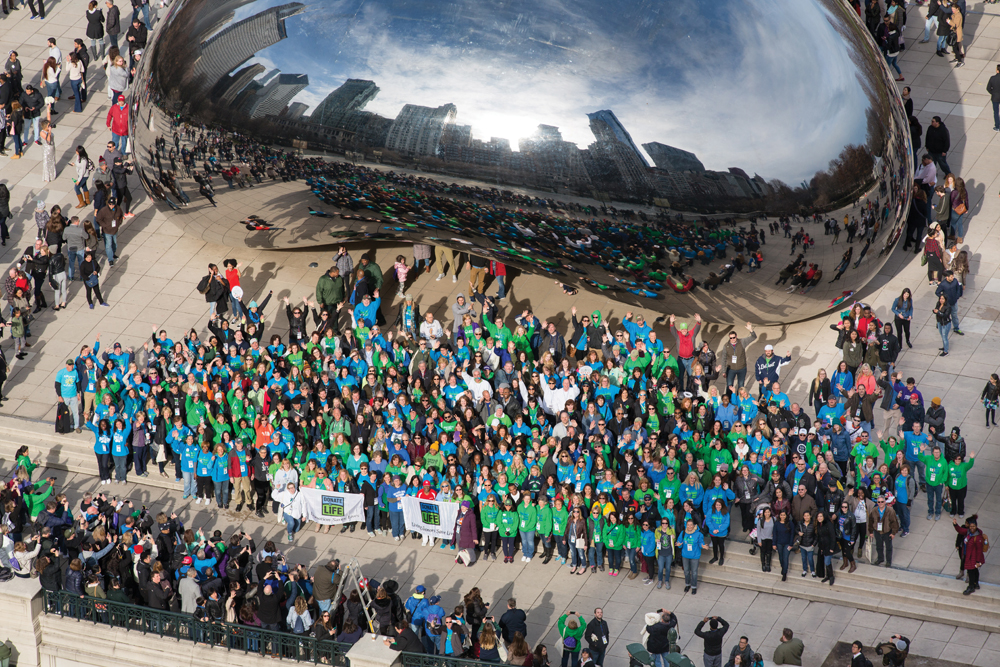
This April get-together at The Bean in Chicago established the Guinness World Record for the most living donors gathered in one spot. Photo by John F. Martin Photography, facebook.com/JFMPhotography


